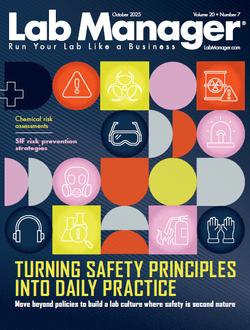Effective laboratory inventory management is critical for ensuring operational efficiency, controlling costs, and maintaining compliance with regulatory requirements. Laboratories, whether in pharmaceuticals, clinical diagnostics, environmental testing, or academic research, rely on well-organized supply chains to support their work. A core decision facing lab managers is whether to adopt a centralized or a decentralized inventory management system. Each structure offers distinct advantages and challenges, depending on the lab’s size, complexity, and specific operational needs.
This article explores the differences between centralized and decentralized inventory management approaches, focusing on key factors such as streamlined purchasing, real-time inventory tracking, the risk of stockouts, and accountability measures. By understanding the benefits and limitations of each model, laboratories can select the optimal inventory strategy that supports efficient laboratory supply chain optimization and cost control.
Streamlined Purchasing: Efficiency in Procurement
Centralized Inventory Management: Centralized inventory management consolidates all purchasing decisions into a single department or team. This approach allows for bulk purchasing, supplier negotiation, and standardization across the lab’s sites and departments. Centralized purchasing processes help reduce duplicate orders and ensure that purchasing follows established protocols, improving compliance with internal policies and external regulations.
Decentralized Inventory Management: In a decentralized model, individual departments or laboratory teams manage their own inventory and procurement. While this provides flexibility for departments with unique supply needs, it can lead to fragmented purchasing processes, reduced buying power, and inconsistent adherence to purchasing policies.
⚖️ Verdict: Centralized inventory management offers better cost efficiency and procurement standardization, while decentralized procurement strategies provide greater autonomy to individual teams.
Real-Time Inventory Tracking: Visibility and Control
Centralized Inventory Management: With centralized systems, labs can implement integrated inventory management software that tracks supplies in real-time across all departments and storage locations. This comprehensive visibility supports accurate forecasting, minimizes duplicate purchases, and helps identify slow-moving or obsolete items. Effective supply chain visibility for laboratories enhances data accuracy and ensures better inventory control.
Decentralized Inventory Management: Decentralized models often lack unified tracking systems, relying instead on individual teams to monitor and manage their own inventory levels. This can lead to data silos, where inventory data is incomplete or inconsistent across the organization.
⚖️ Verdict: Centralized inventory systems provide superior real-time inventory tracking and data accuracy, while decentralized models may struggle with fragmented or inconsistent inventory records.
Risk of Stockouts: Ensuring Supply Availability
Centralized Inventory Management: A centralized approach facilitates predictive inventory management, enabling procurement teams to anticipate demand based on historical data and upcoming projects. Centralized control reduces the risk of stockouts by ensuring essential supplies are reordered before they run out. This proactive approach improves risk management in laboratory supply chains.
Decentralized Inventory Management: With decentralized systems, individual departments are responsible for their own inventory monitoring and reordering. This creates a higher risk of stockouts, especially if teams lack the tools or training to anticipate supply needs effectively.
⚖️ Verdict: Centralized inventory management offers more proactive inventory replenishment, minimizing the risk of stockouts across the organization.
Accountability Measures: Oversight and Compliance
Centralized Inventory Management: Centralized inventory management systems offer clear accountability structures where a dedicated inventory team oversees procurement, usage monitoring, and inventory audits. This central oversight ensures that inventory records are accurate and that any discrepancies can be quickly investigated and resolved. This structure supports compliance in laboratory inventory management by ensuring consistent documentation and adherence to regulatory standards.
Advanced Lab Management Certificate
The Advanced Lab Management certificate is more than training—it’s a professional advantage.
Gain critical skills and IACET-approved CEUs that make a measurable difference.
Decentralized Inventory Management: In decentralized systems, accountability is distributed across multiple teams. This can make it difficult to establish consistent inventory controls and may lead to inconsistent record-keeping, making it harder to trace inventory discrepancies.
⚖️ Verdict: Centralized inventory management supports stronger accountability and compliance through centralized oversight and standardized record-keeping.
Summary Comparison Table: Centralized vs. Decentralized Inventory Management
| Factor | Centralized Inventory Management | Decentralized Inventory Management |
|---|---|---|
| Purchasing Efficiency | Bulk purchasing, cost savings, standardization | Department-level flexibility, but reduced buying power |
| Real-Time Tracking | Comprehensive, organization-wide visibility | Siloed, inconsistent tracking across teams |
| Risk of Stockouts | Lower with predictive inventory management | Higher due to inconsistent monitoring and forecasting |
| Accountability | Central oversight, standardized audits, traceability | Distributed responsibility, inconsistent records |
Conclusion: Choosing the Best Inventory Management Model for Your Lab
Selecting between centralized and decentralized inventory management depends on factors such as your lab’s size, regulatory environment, budget, and the diversity of its supply needs. Large, multi-department labs or organizations with strict compliance requirements may benefit most from centralized systems with integrated inventory management software for labs that supports real-time tracking and predictive ordering. Smaller labs with specialized teams may appreciate the flexibility of decentralized inventory management despite the challenges with data visibility and cost control.
Many laboratories adopt hybrid inventory management systems, combining central oversight with some degree of departmental autonomy for specialized supplies. Regardless of which approach you choose, implementing laboratory inventory management systems that support real-time tracking, predictive ordering, and audit trails can help ensure both efficiency and compliance.
This content includes text that has been generated with the assistance of AI. Lab Manager’s AI policy can be found here.













